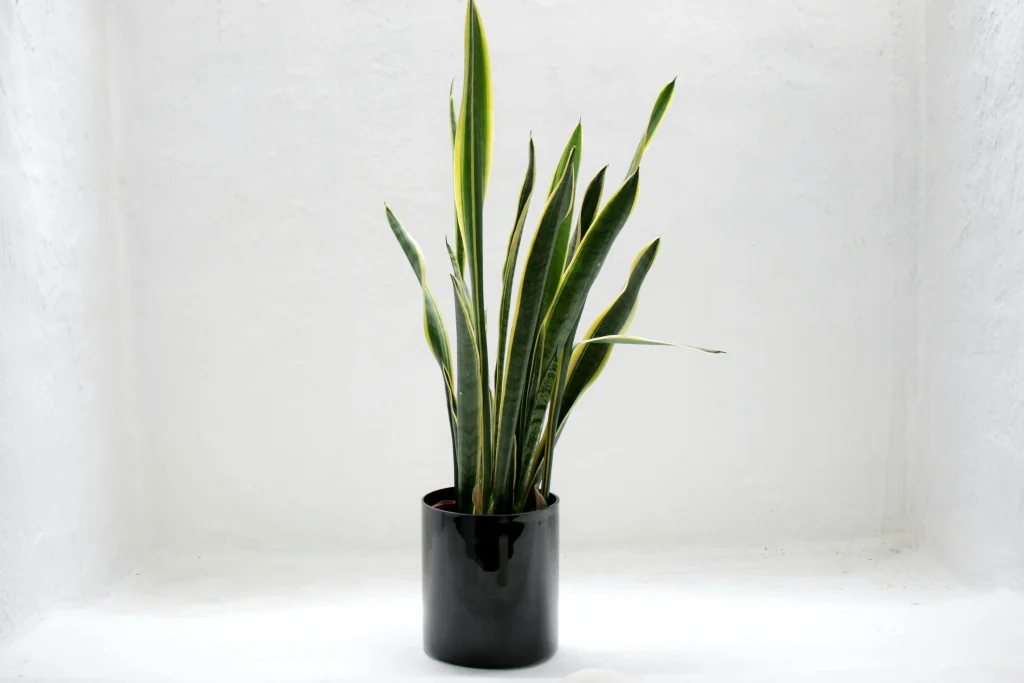Snake plants, known scientifically as Sansevieria or more recently Dracaena trifasciata, are beloved houseplants admired for their striking, upright leaves and low-maintenance care requirements. Often called “mother-in-law’s tongue” due to their long, sharp foliage, these plants are perfect for both novice and seasoned plant enthusiasts. However, to ensure your snake plant thrives, choosing the right pot is crucial. The pot you select impacts not only the plant’s health but also its aesthetic appeal in your space. In this guide, we’ll explore the key considerations for selecting the best pot for snake plant, covering material, size, drainage, and style.
Why the Best Pot for Snake Plant Matters?
Snake plants are hardy, but they’re not invincible. Their thick, fleshy roots store water, making them drought-tolerant but also susceptible to root rot if overwatered or placed in poorly draining pots. A well-chosen pot promotes healthy root growth, prevents waterlogging, and complements your interior decor. The right pot balances functionality with aesthetics, ensuring your snake plant remains a vibrant focal point in your home.
Key Factors to Consider Best Pots for Snake Plant
1. Material
The material of the pot plays a significant role in maintaining the health of your snake plant. Here are the most common options and their pros and cons:
- Terracotta: Terracotta pots are porous, allowing air and moisture to pass through, which helps prevent overwatering—a major concern for snake plants. They’re ideal for those who tend to water generously. However, terracotta can dry out quickly, so monitor soil moisture in drier climates. These pots are also prone to cracking if exposed to extreme temperatures.
- Ceramic: Glazed ceramic pots are stylish and retain moisture better than terracotta, making them suitable for snake plants in humid environments. Ensure the pot has drainage holes, as ceramic can trap water if not properly designed. These pots are heavier, which can be a pro for stability but a con for mobility.
- Plastic: Lightweight and affordable, plastic pots are a practical choice for beginners. They retain moisture longer, which can be beneficial in dry climates but risky if drainage isn’t adequate. Opt for high-quality plastic to avoid cheap, flimsy options that may degrade over time.
- Metal or Fiberglass: These modern materials are sleek and durable but less common for snake plants. They often lack porosity, so excellent drainage is a must. Metal pots can also heat up in direct sunlight, potentially stressing the plant’s roots.
2. Size
Snake plants prefer slightly snug pots. Their roots don’t require excessive space, and a pot that’s too large can lead to overwatering issues, as excess soil retains moisture. Choose a pot that’s about 1-2 inches larger in diameter than the plant’s root ball. For example, a snake plant with a 6-inch root ball thrives in an 8-inch pot. As the plant grows, repot every 2-3 years, increasing the pot size gradually. Snake plants can become top-heavy, so select a pot with a wide, stable base to prevent tipping.
3. Drainage
Drainage is non-negotiable for snake plants. Without proper drainage holes, water can accumulate at the bottom of the pot, leading to root rot—a common cause of snake plant decline. Always choose a pot with at least one drainage hole, and pair it with a saucer to catch excess water. If you fall in love with a decorative pot without holes, use it as a cachepot (an outer decorative container) and place a functional pot with drainage inside.
4. Style and Aesthetics
Snake plants have a bold, architectural look, with long, upright leaves in shades of green, variegated yellow, or silver. The pot you choose can enhance this aesthetic. For a minimalist vibe, opt for sleek, neutral-colored pots in white, black, or gray. Terracotta or earthy tones complement a rustic or bohemian style. If your snake plant is a statement piece, consider a textured or patterned ceramic pot to add visual interest. Ensure the pot’s height complements the plant’s tall leaves—shorter pots work best to avoid overwhelming the plant’s silhouette.
Additional Tips for Potting Snake Plants
- Soil Mix: Use a well-draining potting mix, such as a cactus or succulent blend, to complement your pot choice. Adding perlite or sand can improve drainage further.
- Repotting: Snake plants are slow growers, so repot only when the roots become crowded or the plant starts to crack the pot. Spring is the best time for repotting.
- Placement: Consider where the pot will be placed. Snake plants tolerate low light but thrive in bright, indirect light. Ensure the pot’s material and weight suit the location, whether it’s a sunny windowsill or a shaded corner.
- Maintenance: Clean the pot regularly to prevent dust buildup, especially on glossy ceramic or metal surfaces. Check drainage holes periodically to ensure they’re not clogged.

Common Mistakes to Avoid
- Overpotting: A pot that’s too large can lead to soggy soil and root rot. Stick to a size that’s just right for the plant’s current needs.
- Ignoring Drainage: Skipping drainage holes is a recipe for disaster. Even with careful watering, excess moisture can accumulate without an escape route.
- Choosing Style Over Function: A beautiful pot is tempting, but prioritize drainage and material suitability over aesthetics alone.
Conclusion
Selecting the perfect pot for your snake plant is about balancing practicality with style. Prioritize materials like terracotta or ceramic with good drainage, choose a size that’s slightly larger than the root ball, and ensure the pot complements your decor. With the right pot, your snake plant will not only survive but thrive, adding a touch of green elegance to your space for years to come. Whether you’re a plant novice or a seasoned grower, a well-chosen pot is the foundation for a happy, healthy snake plant.



